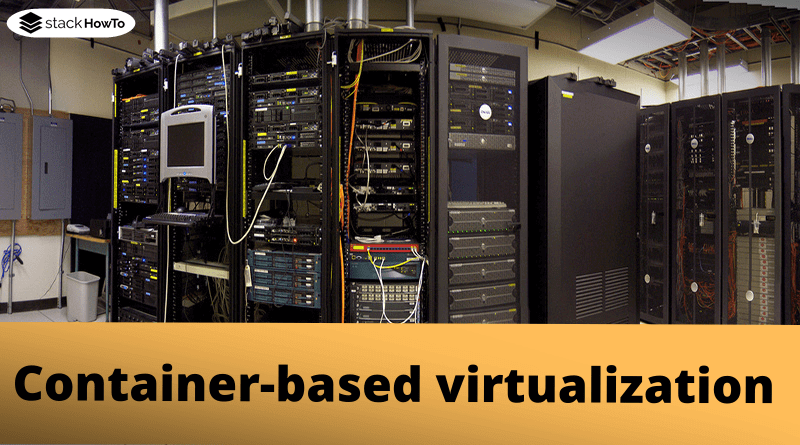What is Container-Based Virtualization?
The term virtualization is often used to describe and implement abstract hardware or software models. A virtual environment opens the way for new technologies, offers additional possibilities, and lowers the costs for software development and operation. The approach of virtualizing an operating system environment is particularly promising.
Container-based virtualization
Virtualization methods are divided into two main groups: hardware virtualization, known as VM, and container virtualization. With container-based virtualization (containerization), the same kernel of the host system is used for all guest systems (containers). For this reason, a container runs on the same type of operating system as the host, for example, “Linux on Linux” or “Windows on Windows”.
Containerization is a virtualization method in which the operating system kernel controls several containers as isolated instances of the user environment at the same time.
From the user’s perspective, containers are functionally identical to the instance of the operating system. The operating system kernel supports complete isolation of containers so that applications from different containers cannot interfere with each other.
Since the applications and their runtime environments are separated from each other in individual containers, containerization is the perfect technique for securely testing and running multiple applications on the same host.
There are both implementations that focus on creating virtually full instances of operating systems (Solaris container, Virtuozzo container, OpenVZ) and options that specialize in providing specific services with a minimal operating environment (Jails, Docker).
Compared to emulating virtual devices, containerization does not require any additional resources. A start of an instance of the operating system, as is typical for VMs, is also superfluous for containers.
Advantages
- Excellent performance (no virtualized hardware, just using real hardware and drivers)
- Scalability in resources of the physical server
- Easy maintainability (all containers of a host using a single operating system)
- More applications can be executed on a physical server compared to a VM that uses more system resources
- High application density (the number of virtual environments that can be run on a server is up to three times higher than the VM)
- A high level of efficiency through the shared use of HW/OS resources
The advantages of container virtualization also include efficient hardware utilization, fast provision of applications, their mobility, scalability and high performance, easy maintenance, and the possibility of using microservices.
Disadvantage
Since a container is an isolated OS instance with its own user environment, there is no possibility of extensive adaptation, configuration, self-installation of the operating system, or the use of an operating system other than the host operating system. Possible problems with containers also include complex system dependencies and a lack of management software for container environments.
From an application perspective, each container is an independent operating system. The OS Virtualization Layer, which is logically located between the host hardware and the containers, provides resource isolation and security for all containers.
In an inactive state, a container is either an image file or a series of files. When the container is started, the container engine (Docker, Railcar, LXC, CRI-O, RKT) unpack the container image with the required files and metadata and informs the operating system kernel about the activation.
Once started, the container becomes a system process. The procedure for starting containers, the format for container images, and the metadata (hardware architecture, operating system) are defined by standards. The best-known standard is OCI (Open Container Initiative).
Conclusion
Containers offer many advantages to virtual environments. They enable easy and fast deployment, scalable and dense server environments, higher performance through non-virtualized input/output, promising opportunities for the hosting market, quickly available frameworks like dockers, and sharing tools like GitHub. Containers are not a universal solution for any kind of virtualization, but just another tool that complements hardware virtualization.





